Welcome new readers of RMP’s quarterly H2 infrastructure report. Each quarter we look back on the major stories related to hydrogen infrastructure advancements and we compare the current AFDC database to the AFDC database in the prior quarter to see what has changed. The AFDC database is updated by the US Dept of Energy & can be found by clicking here. Canada added a new data repository for hydrogen stations in Q2-2020. The Canadian website is administered by Natural Resources Canada. RMP will continue to use the US Department of Energy database as our primary data source as we learn more about the Canadian database. All this data as well as data RMP collects by hand goes into RMP’s interactive map of hydrogen infrastructure in the USA & Canada you can see by clicking here. Ok, on with the report…
The main hydrogen infrastructure story this quarter is one of disappointment but also one of promise & hope. The disappointment was related to a lack of liquid hydrogen (LH2) availability because of a hurricane in the Gulf of Mexico. The promise & hope comes from the plethora of forthcoming hydrogen liquefaction projects announced that will diversify the LH2 supply chain for California drivers. Curious minds like yours indeed might ask: How did a hydrogen liquefaction plant losing electricity in New Orleans affect drivers in California? Let’s put on our detective hats and
examine how Hurricane Zeta making landfall in New Orleans negatively impacted FCEV drivers in California. Then let’s look at the good news about how these kind of supply disruptions of LH2 availability are less likely to occur again in the future.
How Do You Figure Out There is a Liquid Hydrogen Shortage?
RMP launched a new URL this quarter (https://www.respectmyplanet.org/public_html/united_states/soss_charts) that allows you to check the status of your favorite hydrogen refueling station before you head out for refueling. The new link graphs out the last four days of activity in 15 minute increments of time. It tells you if your station is online (green) or offline (red) as well as letting you know how much inventory the station has. RMP built this page to study & better understand the availability, uptime, and usage characteristics of each California hydrogen refueling station, but you can use it to check your favorite station’s status any time too.
It’s been intriguing to watch real-time movements of station activity with the big new liquid hydrogen stations opening like First Element Oakland, First Element Fountain Valley, and First Element Mission Hills. RMP is dubbing these liquid hydrogen >800kg capacity stations as “Gen2 stations” because they’re not like their predecessors. RMP recently wrote a post categorizing each California’s 43 hydrogen stations as Pioneer, Gen1, or Gen2 stations to make this distinction which you can read about here.

Watching the refueling patterns of these big new Gen2 stations was telling the story of their effectiveness before the shortage hit. Just like you would expect would happen, a 1,200kg capacity station like Fountain Valley would get fueled up by a liquid h2 tanker truck very similar to the way a gasoline tanker would refuel a gas station. Then, vehicles would come sip off of that big tank and whittle its inventory down. When the inventory was 100kg or so another liquid hydrogen tanker truck would come by and replenish the station’s inventory similar to a gasoline station. This pattern of steady delivery of hydrogen to drivers was what I had envisioned when I programmed the new page & my hypothesis was evidenced with each station’s real world data graphing. These big stations were working just as you’d expect them to work and showing a true paradigm change in hydrogen refueling.
Then on November 15th as I was checking out RMP’s new webpage, the graphs didn’t look so good. All the sudden these big stations went from having inventory of hundreds of kilograms & being online to zero kilograms & offline. My first thought was that I programmed the PHP wrong and something wasn’t working correctly with the coding. I turned to the Hydrogen Car Owners group on facebook to ask about what I was seeing and sure enough, these stations were empty. Drivers in California were confirming on the ground what I was seeing on the website graphs, but what had happened?
Hydrogen for mobility is a new market and is not #1 in the pecking order of industrial demand yet. The current market for hydrogen demand is mostly for oil refining which powers about 99% of all transportation currently. There are literally only a handful or two of hydrogen liquefaction locations around the world to supply hydrogen for industrial demand. Therefore, when a 78 tons per day liquefaction facility like the one in New Orleans went down because Hurricane Zeta had knocked out its electrical power, that left only a couple other locations to serve the remainder of the US market. Air Products has liquefaction plants in West Palm Beach FL (30 tpd), Mississippi (33 tpd), New Orleans (78 tpd), and Sacramento (6 tpd)1. Losing just the New Orleans plant is more than half of Air Products total LH2 production capacity. Because hydrogen demand for critical energy infrastructure like gasoline refining trumps priority for nascent alternative energy infrastructure like hydrogen FCEVs, deliveries of liquid H2 to First Element stations in California have taken a back seat until the supply chain gets back on its feet.
Latest reports from Air Products expect the liquid hydrogen supply to normalize by the time you read this sentence. However, even as I re-read this post for grammar mistakes on 12/28/20 I see Oakland, Fountain Valley, and Mission Hills are still empty and offline. This link is to an enlightening thread regarding the December LH2 shortage on the Hydrogen Car Owners facebook forum amongst the most knowledgable folks following hydrogen FCEVs in California.
How Can We Diversify the Liquid Hydrogen Supply Chain?
National Hydrogen Day occurs every October 8th (in Q4). 1.008 is the atomic weight of H2 & corresponds to the 10/08 calendar date. It’s a day many of the big companies & our US Dept of Energy use to announce future plans they have related to H2 energy infrastructure. The big announcement this past October 8th came from Air Liquide when they announced that construction is well underway for a new 100% renewable hydrogen liquefaction plant in Las Vegas. This announcement regarding LH2 became the top story for this Q’s report even before the LH2 shortage occurred. Let’s look at this plant’s specifications and also take a look at hydrogen production & liquefaction infrastructure across the continent.
The new Air Liquide plant (shown under construction above on 10/8/2020) represents a $200M investment that will be capable of producing 30 tons of green hydrogen per day or enough to fill about 5,500 Toyota Mirai’s per day. Air Liquide says this one liquefaction plant alone will be able to service 200 H2 stations in California. This is welcome news to a supply chain that needs more diversity to avoid disruption. The plant will have a 475,000 gallon spherically shaped tank for liquid H2 and should be able to supply large-scale deployment of FCEVs in the California market by 2022. This one plant should be able to service about 42,000 vehicles according to Air Liquide. The current number of FCEVs registered on California roads is approximately 7,500.
Liquid Hydrogen Production: Past, Present, & Future
According to a presentation published by Linde on January 7, 2020, liquid hydrogen production in the world in the year 1980 consisted of about 90 tons per day (tpd) in the USA and 1.3tpd in Japan. By 1990, USA production increased to 128tpd, Japan increased to 4.5tpd, Canada came online with 51tpd, Europe had added 15tpd, and South America could produce 2.3tpd. By the year 2000, the USA was up to 208tpd, Europe had increased to about 20tpd, and Asia came online with 0.5tpd with the rest of the world staying static. By 2010, Japan had increased to 21tpd and Asia increased to 2.5tpd with all other areas remaining static. Fast forward to today and the USA is up to 241tpd & Japan is up to 31tpd with other regions staying static. Keep in mind that all of this is with very little FCEV demand.

Now when we look forward to 2021, using the presentation prepared by Linde, additional new liquid H2 capacity of 90tpd is planned for the USA, an additional 5.3tpd is planned for Europe, another 5.3tpd additional capacity is planned for Japan, and a demo plant is planned in Australia. Linde is predicting that to serve just 1% of the mobility market share would require hydrogen production of 176,000tpd.
It’s always good to see big numbers when it comes to hydrogen because H2 is inexhaustible & always local. The bigger any hydrogen number gets, like 176,000,000 tons per day, it only gets cheaper and provides more local jobs. You can never run out and it can only get cheaper as you make more, which is why economists peg its future cost reductions to those seen in the solar tile industry. RMP conjectures that by the time we reach hydrogen fuel cell mobility reaching 1% of all mobility, storage mediums for hydrogen like LOHC & ammonia will be a more common means of producing, transporting, and storing hydrogen.
Liquid hydrogen carriers at ambient temperature & pressure are just one more avenue for hydrogen’s costs to drop significantly as logistics get much simpler and cheaper versus cryogenic liquefaction. For the next ten years, however, liquid H2 will be what gets us off the ground to really get the ball rolling on FCEV uptake & initial cost drops. Let’s look at some of the specific examples of new hydrogen production infrastructure across North America that is coming to help diversify the supply chain to California.
This quarter, RMP is adding production, liquefaction, and transfill infrastructure to our H2 map as it seems such an important part of the hydrogen infrastructure picture. Because there is no central database RMP is aware of to find this information, it becomes trickier to hunt down. RMP uses Google searches of county records and newspaper clippings to find the exact lat/lon of these locations but it’s difficult to find them all. If you know of any hydrogen infrastructure locations like stations, production locations, transfill locations, etc, please let RMP know by sending an email to respectmyplanet at gmail dot com to let us know & RMP will add the location to the map.
This month (& in shown in the video above), RMP adds the planned Air Liquide liquefaction plant in North Las Vegas to our map. This plant will be instrumental in allowing California to reach its goal of 200 stations and over 40,000 FCEVs on the road. Also added to RMP’s map this month are the following existing hydrogen production & liquefaction locations listed below:
- Air Products Santa Clara, CA – LH2 Transfill Plant
- Air Products Wilmington, CA – LH2 Transfill Plant (recently doubled capacity)
- Air Products Carson, CA – H2 Production & Liquefaction (LH2)
- Air Products Long Beach, CA – LH2 Transfill Plant
- Air Product Sacramento, CA – H2 Production & Liquefaction (LH2)
- Air Products New Orleans, LA – H2 Production & Liquefaction (LH2)
- Air Products La Porte, TX – H2 Production & Liquefaction (LH2)
- Air Products Sarnia, Ontario – H2 Production & Liquefaction (LH2) (near RMP HQ)
- Wells Dam Cummins Pateros, WA – H2 Production from 5MW electrolyzer on Columbia River (Link) (largest in USA)
- Linde Ontario, CA – Planned 100% green H2 production
- Air Liquide Bécancour Quebec – 100% green H2 Production & Liquefaction (LH2) from 20MW electrolyzer (largest in world but Saudis have a 20MW green electrolyzer coming online soon too that will tie Canada for largest in the world)
All of the locations mentioned above are now on RMP’s map but there are surely locations missing we have not discovered yet. If you know about more hydrogen production locations you can’t find on our map, let RMP know. RMP can always use volunteer support from you to make our hydrogen infrastructure maps better. RMP will be researching & adding more information about each of the locations added to the map to better understand how the whole H2 energy infrastructure system works across North America.
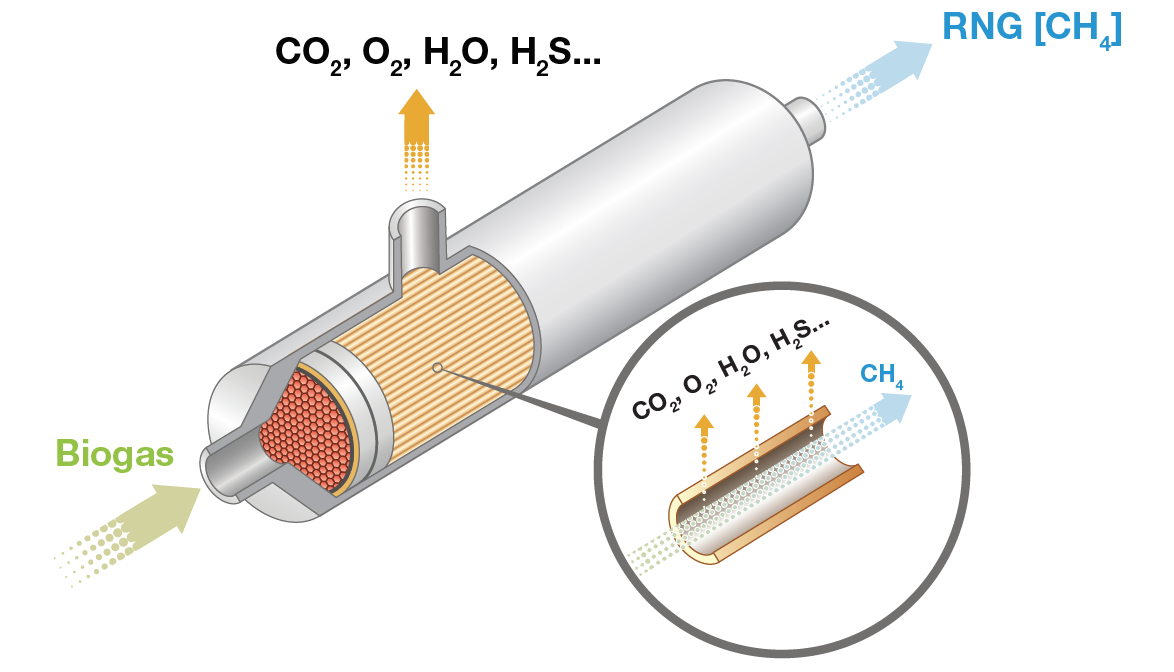
Air Liquide is poised to play a major role in the Northeast’s push toward sustainability by completing the installation of a 20-megawatt Proton Exchange Membrane (PEM) electrolyzer at its existing hydrogen production facility in Bécancour, Quebec, becoming the world’s largest PEM electrolyzer in operation. The facility uses hydro-electricity — a renewable power — to produce green hydrogen for the Northeast mobility and industry markets. This makes Air Liquide the biggest player in green H2 production for carbon free mobility. Note that Air Liquide is not just bringing literal tons of production to the FCEV market on North America’s west coast but also its east coast and it’s all 100% green which continues to demonstrate new green hydrogen capacity with real numbers despite FUD from the antis.
Not mentioned above are a two additional planned locations for the California market for which RMP does not yet have exact coordinates to add them to our map. One of my new facebook friends on Hydrogen Car Owners asked recently if there was any new information on the renewable hydrogen projects planned in California that were awarded funding on GFO-17-602 back on August 10, 2018. Each of the three locations awarded funding on that day has been a long time coming and I don’t think COVID-19 helped speed up their planning. Each location was awarded nearly $4M and the awardee pledged to put up $29M of their own money for a total of roughly $33M per location or $99M total. RMP reached out to the friendly folks at California’s Energy Commission to ask for any updates on these new plants.
Jean Baronas at the CEC was very helpful in directing my questions regarding GFO-17-602 to the proper people who could help supply news about two of the projects’ statuses. Hieu Nguyen at the CEC had this to say about H2B2 renewable hydrogen production project: “The H2B2 USA renewable hydrogen production project is currently in the pre-execution phase and is planned for agreement execution with the Energy Commission in Q1 2021. H2B2 USA is currently awaiting the result of their CEQA application for their project in Fresno, CA. This agreement execution is dependent on H2B2’s completion of CEQA. I anticipate H2B2 to complete this task by January 2021. If things goes as planned, we may anticipate initial renewable hydrogen production sometime in Q2/Q3 2022. This project was delayed due to issues with site control of the initial project site, which forced H2B2 to seek for an alternative site location. Let me know if your have any further questions.” RMP still does not know an exact location for the H2B2 project yet, but when it’s known, it will get added to RMP’s infrastructure map.
Andrew Hom from the CEC had this to say regarding the Stratos Fuel renewable H2 project: “The Stratosfuel project has been delayed and is currently going through the amendment process to relocate their project from Moreno Valley to about 40 miles north in Victorville, CA. They are on schedule to have their amendment presented at the January CEC Business Meeting for approval. Please let me know if you have any further questions.” Again, when RMP learns the exact location, it will be added to the map. If you live near any of these locations and want to contribute information to the map like photographs or videos, please send them to respectmyplanet at gmail dot com and let me know what location (lat/lon) is in your photo or video and RMP will upload that media to our map to help show the chronological development of these new locations. By sharing your photos & videos with RMP, you can help us build a better community map for all to share.
RMP considers these new (& old) production & liquefaction locations a critical part of understanding the big picture of how H2 refueling stations are supplied. Watching this infrastructure get planned & built is demonstrating more of the anti-hydrogen myths are getting busted each month, quarter, & year. In its history, hydrogen never had much demand outside of refining oil & therefore most of it was made with subsurface natural gas. Hydrogen antis say this makes hydrogen dirty but that’s because no one ever had the tech or need to make green hydrogen cheaply or at scale. Now that hydrogen has more demand & renewable electricity costs have dropped so significantly, companies around the world are demonstrating how hydrogen can be made economically with no CO2 whatsoever.
In some states that produce over 90% of their electricity from burning coal to charge BEVs, we can use fuel cells to charge those BEVs with green hydrogen. As we can see from all this new hydrogen capacity coming online to serve FCEVs almost 100% of it is green with no net CO2, this hydrogen can and should also be used to fast-charge BEVs. Another myth about hydrogen being dirty bites the dust but don’t expect the antis to stop spreading misleading information, we must continue to speak out against pseudo science. Remember, hydrogen works with BEVs & will be one of the only ways to fast charge BEVs with 100% green energy. Batteries and fuel cells work together, not against each other.
Keep checking back to RMP to learn more about all this new hydrogen production infrastructure and how the hydrogen drought of Q4-2020 is less likely to happen again in the future as North America’s hydrogen supply grows bigger & greener. Let’s look at other hydrogen news in Q4-2020.
New H2 Stations Opened To The Public 2020 Q4:
On October 26, 2020 the new First Element Mission Hills station opened to the public with a 1,200kg capacity. RMP is classifying liquid hydrogen stations like this one as “Gen2” stations based on the fact these are next generation stations because of increased inventory capacity and an increased number of fueling positions (up to 4). While this new station has been offline through much of December because of the Hurricane Zeta issue talked about earlier, it was functioning smoothly before that and can continue to operate smoothly as long as LH2 is supplied. On December 22, 2020 at 9:45AM this station received its first replenishment since the supply chain disruption. RMP offers this free SOSS Charts website to monitor hydrogen station activity in order to be able to see if this or any other station is online or offline as well as its current inventory on hand. You can use RMP’s SOSS Charts website to check in on your favorite station before leaving the house to double check its availability. RMP uses this tool all the way from Michigan to be able to monitor station activity in California, you can use it too for free (always free).
Fuel Cell Electric Vehicles Registered in North America 2020 Q4:
RMP uses data from IHS Markit Worldview to report FCEV registrations in the USA. IHS Markit is the industry standard source in the Detroit automotive industry for statistical registration data used in financial analysis & parts forecasting. IHS Markit data updates are published quarterly & lag approx two months behind calendar date for processing into the database. Therefore, in this quarter’s report, you’re looking at last quarter’s data which is the most recent and was published about one month behind this article’s publication date. Below are two tables compiled by RMP showing FCEVs registered in the USA by state and in California by county.

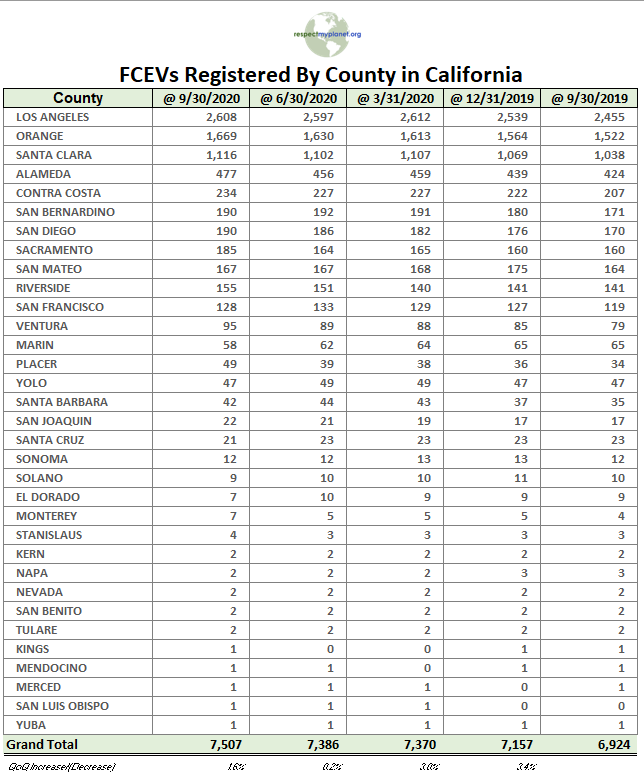
Important H2 Headlines 2020 Q4:
10/6/2020 – Jacob Leachman, Assistant Professor of Mechanical & Materials Engineering at Washington State Universitry and Laboratory Director of WSU’s Hydrogen Properties for Energy Research (HYPER), wrote an article contemplating smaller liquefaction systems -vs- large liquefaction systems. https://hydrogen.wsu.edu/2020/10/06/could-smaller-hydrogen-liquefiers-be-better/
Jacob’s article above referenced an article announcing a new 5MW electrolyzer on the Columbia River in Pateros, Washington. This new 100% green hydrogen production location is located west and slightly north of Seattle just on the other side of the Okanogan-Wenatchee National Forest. RMP has added this new planned production location to our H2 infrastructure map. You can read about this new 100% green hydrogen production location by clicking here or clicking here.
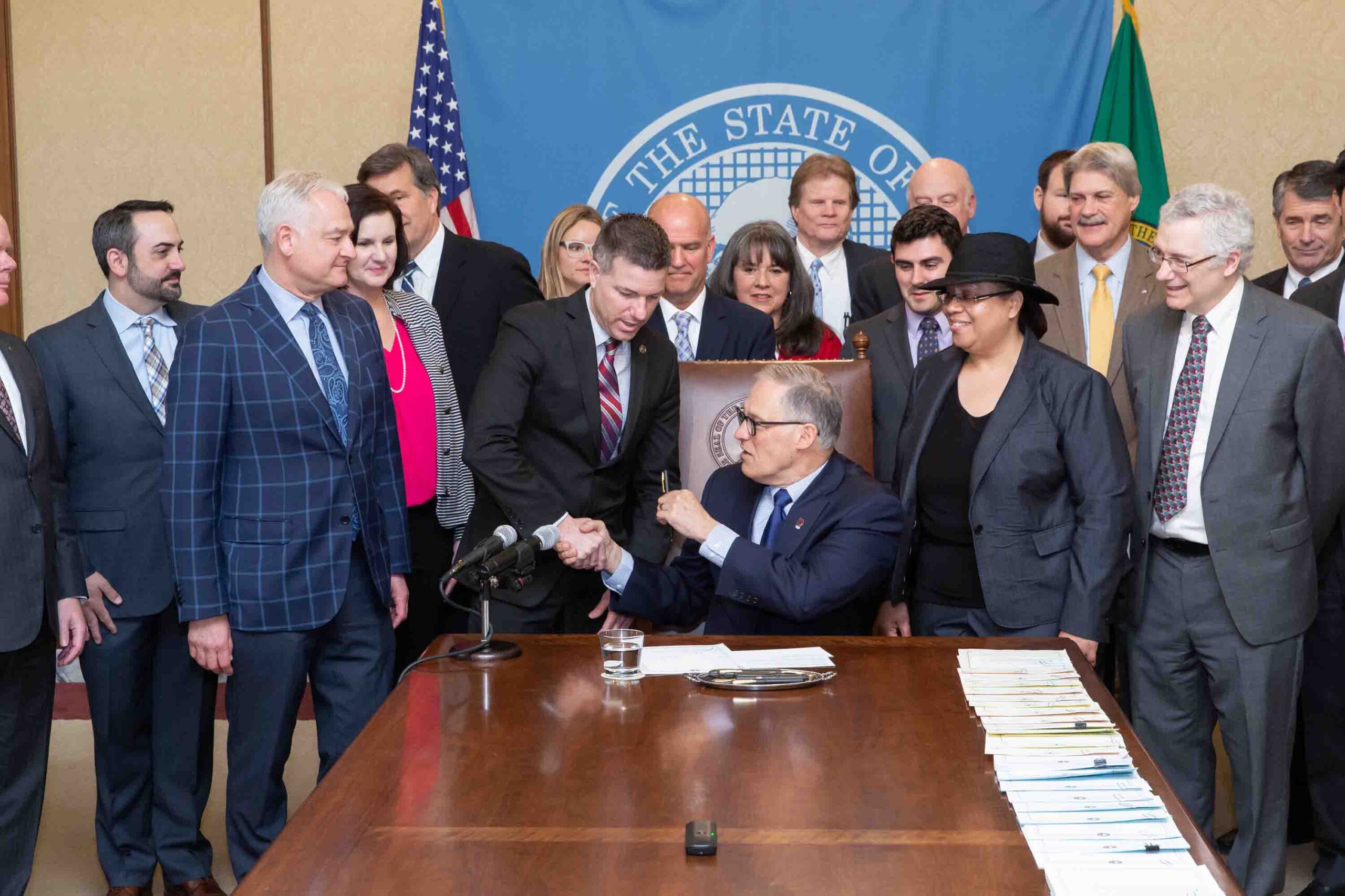
10/7/2020 – Coalition launches Road Map to a US Hydrogen Economy , tips 17 million ton demand by 2030 and potentially 63 million ton demand by 2050: https://www.biofuelsdigest.com/bdigest/2020/10/07/the-road-to-hydrogen-coalition-launches-road-map-to-a-us-hydrogen-economy-tips-17-million-ton-demand-by-2030/
10/8/2020 – Air Liquide Presser announcing and showing pics of the new 100% renewable hydrogen liquefaction facility in North Las Vegas that will serve California FCEV refueling. This plant will produce 30 tons of green hydrogen each day. This location has been added to RMP’s infrastructure map.
11/2/2020 – Linde says they will start making Green H2 in Ontario California. This location has been added to RMP’s infrastructure map.
11/2/2020 – Cummins gets $2.6M grant for a SOFC 20kW system at the university of Connecticut: https://fuelcellsworks.com/news/cummins-receives-federal-grants-to-advance-solid-oxide-fuel-cells/
11/12/2020 – The DOE announces their “Hydrogen Program Plan” in this 56 page document: https://www.hydrogen.energy.gov/pdfs/hydrogen-program-plan-2020.pdf
12/9/2020 – Gavin Newsome appoints Liane Randolph as next chair of the air resources board which is a powerful position in determining funding allocations for hydrogen infrastructure in California. Article here: https://www.politico.com/states/california/story/2020/12/09/newsom-picks-new-leader-for-powerful-california-air-board-1344112
Here is an opinion piece from Liane Randolph from June 28, 2018 that might give some insight into her thought process. It’s a five to seven minute read that reads very much like an RMP article which is reassuring and gives confidence she knows what she’s talking about when it comes to energy. 😉 https://www.utilitydive.com/news/assuring-grid-reliability-in-california-a-view-from-commissioner-randolph/526696/
12/10/20 – Toyota moves closer to volume PPAP‘d production of their Class 8 hydrogen truck: https://global.toyota/en/newsroom/corporate/34464066.html Trivia – did you know all of Toyota’s Class 8 Project Portal big rigs are made right here in Michigan? Yep. It’s true, they’re made within a 30 minute drive of RMP’s HQ.
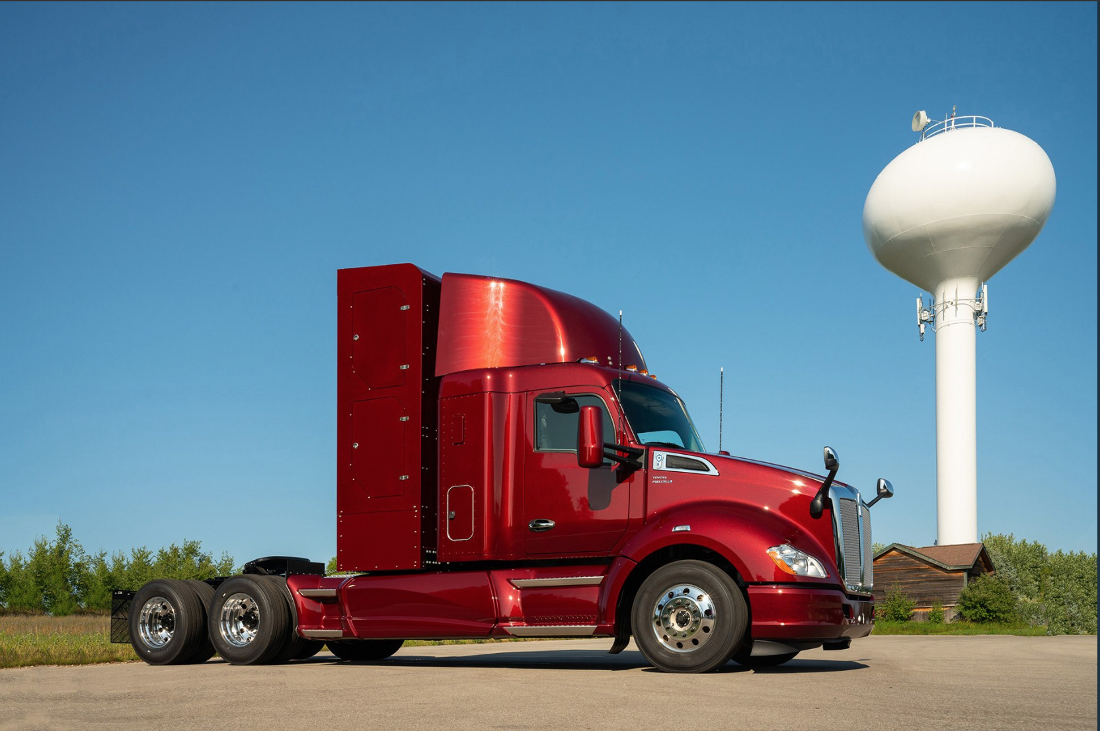
12/12/20 – Natural Resources Canada lays out 141 page comprehensive #hydrogen strategy for the country. Our friendly neighbors to the north are going all in on hydrogen and it’s great to see more government officials starting to understand how important hydrogen is to their sovereign economy. RMP will be the least surprised group to see Canada accelerate past the rest of the world to achieve a higher percentage of FCEV drivers per capita than any other country, [RMP believes] Canada is poised to take the world stage in hydrogen infrastructure development soon.
Final Remarks for 2020 Q4
In Q4-2020 LH2 dominated the storyline for good & bad reasons. New Gen2 stations coming online are liquid hydrogen stations that need a stable supply of LH2 to keep energy hungry drivers driving. When a 78 ton per day liquefaction plant in New Orleans went offline impacting LH2 deliveries to California drivers, it showed us how important it is to diversify the supply base of liquid hydrogen. That’s why it was such good timing for Air Liquide to show their progress on a new 100% green hydrogen liquefaction plant in Las Vegas, Nevada purpose built to serve California drivers. Air Liquide also announced the largest PEM electrolyzer in the world at their Bécancour Quebec location will be producing 100% green hydrogen for Canada’s & the USA’s eastern seaboard. Even though Q4-2020 had its lumps like most of 2020, it feels reassuring that “help is on the way”. Everyone is looking forward to putting 2020 in the rearview mirror of their FCEV.
So many things point to a brighter & stronger hydrogen infrastructure future, but challenges remain. RMP will continue to monitor hydrogen infrastructure developments and add those locations to our map of hydrogen infrastructure. Now that RMP has: FCEV registrations by county, stations by county, and hydrogen production/transfill locations, we have all the tools to take our hydrogen infrastructure map to new heights demonstrating how hydrogen infrastructure works by the numbers.
RMP hopes our volunteer research will help other state & federal governments around the world learn how to most efficiently allocate capital to build a cleaner & greener energy economy where BEVs & hydrogen fuel cells work together. RMP operates with similar funding to FCEV emissions (zero) and will continue to carry on as long as I can fund it myself. But we could do so much more with a financial donation from you. RMP guarantees 100% of any financial donation will go toward general expenses of the organization as we are not in this for the money. RMP is a Michigan registered United States 501(c)3 non-profit organization. Any donations to RMP are tax deductible in the USA. Please donate securely by clicking here and you can help the message of clean & green hydrogen reach more people to help combat pseudo-science fake news sites running rampant with misleading information.
Footnotes:
Footnote #1 – Songwut Krasae-in, Jacob H. Stang, Petter Neksa “Development_of_large-scale_hydrogen_liquefaction_processes_from_1898_to_2009“ (Norwegian University of Science and Technology, Trondheim, Norway – March 26, 2010 – pp4526). Note that some of the locations listed may have had capacity expansions or closed since 2010 & RMP is still investigating current capacities for our database. For example the Linde report says Canada has 51 tpd & this document says Canada has 40 tpd.
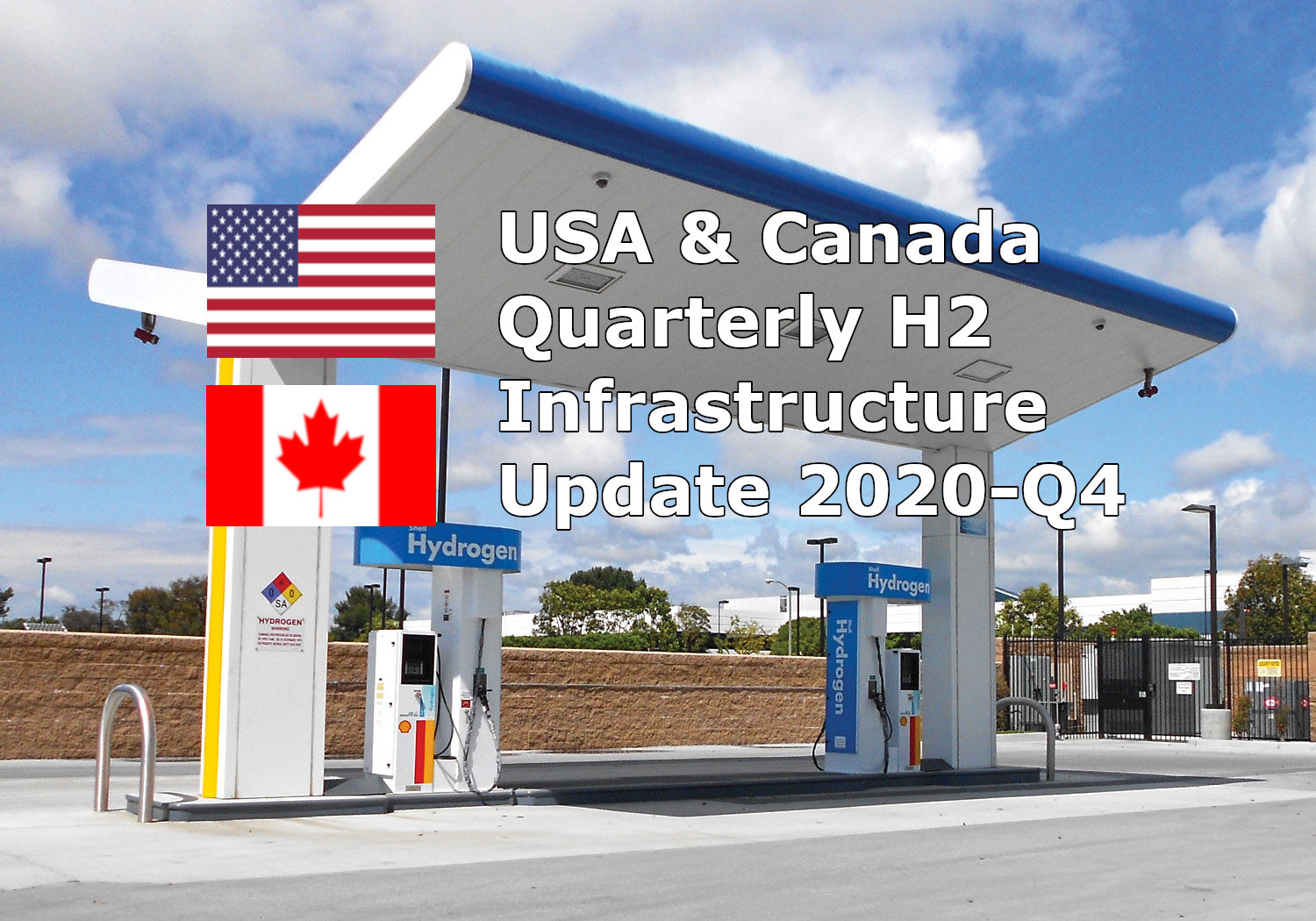
Leave a Reply